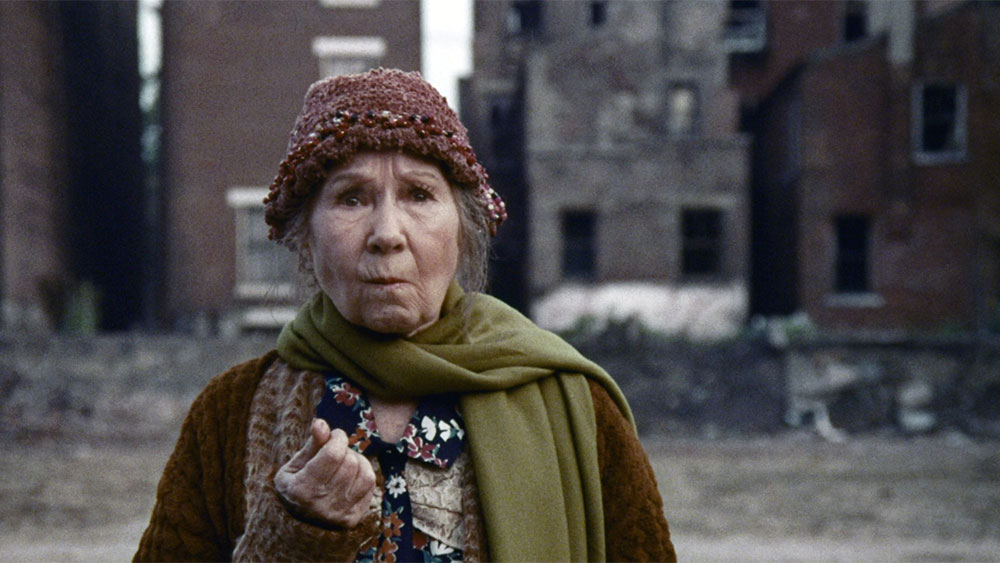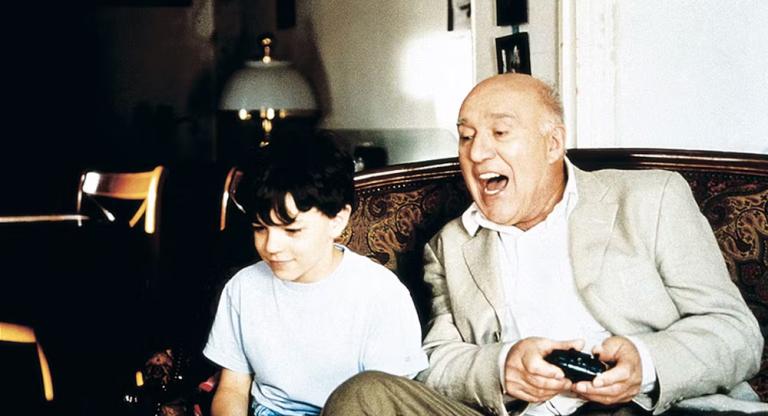An excerpt from “Queen City Class War: Homebodies” by Julia Gunnison, an essay in the Kill Yr Landlords Zine.
Following a nationwide search, director Larry Yust and producer Marshal Backlar considered three locations for the filming of Homebodies (1974). St. Louis, Cleveland, and Cincinnati all met the production’s criteria; these large, industrial, midwestern cities ravaged by the federal government’s post-war urban renewal program all contained blocks of turn-of-the-century buildings slated for demolition. In the film’s story, such a block houses elderly renters facing displacement at the hands of city officials and a commercial developer; determined to remain, the tenants employ gruesome methods for deferring eviction. Under the leadership of Mattie (character actor Paula Trueman’s ornery anti-hero), the rebels hang onto their home by springing elaborate booby traps and launching cold-blooded attacks on their enemies. The crew was location scouting during the final stage of urban renewal—the Nixon administration would discontinue the program in 1974, the same year of Homebodies’s release. Local government enthusiasm for exterminating blight, however, still ran high; for all the bulldozing that had already taken place, there were yet more buildings to flatten, more families to relocate, and more neighborhoods to erase. Cincinnati had a wrecking ball aimed at buildings impeding its Queensgate II development, a project that would bring arts and commerce to a sleepy area just west of downtown. Of the doomed city blocks the filmmakers evaluated for the production, nothing could match the tragic elegance of the brick houses lining Richmond Street in Cincinnati’s West End.
Crumbling sidewalks, discolored facades, boarded up doorways, “CONDEMNED” signs plastered on every window—the opening sequence of Homebodies introduces us to a block that has seen better days. Though most of the buildings are vacant, the street teems with activity as the majority of the remaining residents are ushered from their homes in advance of demolition. Mattie and her neighbors watch in fear, knowing “they’ll come for us tomorrow.” The script called for Yust to capture footage of the demolition itself—something the city seemed only too happy to accommodate. According to The Cincinnati Enquirer, Backlar had “lavish praise” for the smooth coordination with the city manager to arrange the finer details of the wrecking and dynamiting process. It wasn’t until the day of the razing that they ran into trouble. According to an interview with Yust conducted by the film critic Nick Pinkerton in his “Employee Picks” Substack, a woman who lived on the block refused to be evacuated. Perhaps this was the same woman that the June 2, 1973 edition of The Cincinnati Post identified as Mrs. Rose Fisher, a Richmond Street resident who called the destruction “evil” and spent the day “clutching a Bible” in a car: “It ain’t supposed to be, tearing down these buildings,” she told the Post. “People have no place to live...no place to go.” This straightforward appeal to reason and humanity could have come directly from the movie. The Homebodies protagonists make similar protestations. Their arguments fall on the deaf ears of a social worker whose job is to empty the block, and who becomes increasingly frazzled by the residents’ defiance. “You’re acting like children!” she cries, a line that perfectly encapsulates the rank paternalism of urban renewal.
Thank you to Chris Smith, librarian at the Cincinnati Public Library, for his generous insights on the film’s Cincinnati shooting locations.
Homebodies screens this evening, October 4, and on October 5 and 10, at Anthology Film Archives as part of the series “Kill Yr Landlords.” Film Critic Nick Pinkerton will introduce the Saturday, October 5 screening. The Kill Yr Landlords zine is available for pre-order.


